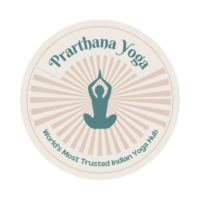LOKĀ SAMASTĀ SUKINŌ BHAVANTŪ
May the entire universe.
Be filled with
Peace, Joy, Love, and Light

After practicing Yoga for a long while, some of us do not derive the desired benefits of these ancient yogic practices, be they physical, mental, or spiritual. Things turn out differently than we desire. You feel disappointed and lose faith as the only solution you thought would solve all your problems and bring joy and peace to your life does not work in your favor.
Then, you start doubting the inspirational stories of yoga teachers you read online or saw on YouTube. You tend to discontinue your practice, losing motivation. But wait, we do have a solution.
Reflect! Were you incorporating the proper yoga techniques in your yoga practice?
Ask yourself.
Self-reflection is one of the most necessary aspects of Yoga.

Ancient Yoga Techniques
I’m sure these 13 scientific yogic techniques will put you on the right track and guide you throughout your Yoga journey.
Patanjali described Asanas as ‘Sthirasukhamasanama’. It means Asanas should be stable and pleasurable. If you don’t derive pleasure from practicing them, they are merely physical exercises, not Yogic Asanas.
1. Having a scientifically trained and experienced yoga teacher is desirable at the beginning of your yogic studies. You need to know the basic principles and techniques of Yoga.
Yogic philosophy introduces one to a whole new and pure life perspective, which is easy to adapt to with the help of a Guru. A highly experienced Yoga teacher will be a boon in this aspect.
2. If a teacher is unavailable, following any pose’s principles and asana yoga techniques is necessary by thoroughly reading about it from a renowned Yoga book. Initially, rather than reading 100 books and trying to practice everything, stick to a single sound source and gain mastery over it.
3. Slowly and steadily improve your level.
Remember, ‘Haste is Waste.’ If you look at the advanced yoga techniques or the old practitioners doing strange and challenging poses, you may get an inferiority complex and hence get demotivated. But know that they have not mastered all those things in a year. Improving just 1% daily is better than remaining static.
4. Don’t indulge in practices indiscriminately. Follow only those that suit you. Know your body’s requirements and limitations.
Yoga disapproves of all kinds of competition and force. So, avoid competition and strain of any kind.
5. Do your practice in a calm and pleasant mood. Practice Shavasana to still the mind before going into Yoga Abhyaas.
6. Yoga is not gymnastics or a physical workout. It is not contortion, either. It’s all about how conscious you are about your body, mind, and breath. Minimize your efforts to attain the final pose. The effort minimization gives space to improve conscience.
Patanjali described asanas in Sanskirt as Prayatnashaithilya, i.e., minimization of efforts.
7. Breathe throughout the nose while performing Asanas. Don’t try to hold your breath. This helps the practitioner to get into a natural state.
8. Parts of the body which are not directly involved in the asanas should be consciously relaxed. The more relaxed the Sadhak is, the more energy they will save.
9. Try to attain the posture according to your capacity. Feel good and peaceful while practicing. The practice should give you bliss.
One should perform Yoga in a very subtle, gentle way and not forcefully. It is not similar to muscle building.
10. Go into the Asanas slowly and smoothly with a FLOW. Avoid violent and jerky movements.
11. After attaining the final posture, fix your mind on the breath. Take your mind away from Asana and feel the touch of the incoming and outgoing air. Also, keep your attention on the Infinite One.
12. Do not practice to the point of fatigue; practice Shavasana, corpse pose, to feel fresh and peaceful and then restart.
13. The primary objective should be to progressively reduce the number of rounds of the practice of any single Asana and increase the duration of maintaining it. Retention (holding a pose) of Asanas is more necessary than the number of Asanas.
These Ashtanga yoga techniques work on the mind and the soul.
So here’s the essence!
Work on this. Don’t give up your practice. Adopt Yogic practices as a way of life and gain happiness by becoming more steady, healthy, flexible, and, importantly, an Evolved Human being!
NAMASTE
With Love – Prarthana Khot

Pingback: What Are Some Widespread Myths Regarding Pranayama?